Politicon.co
Fall of Dacca: Another Perspective
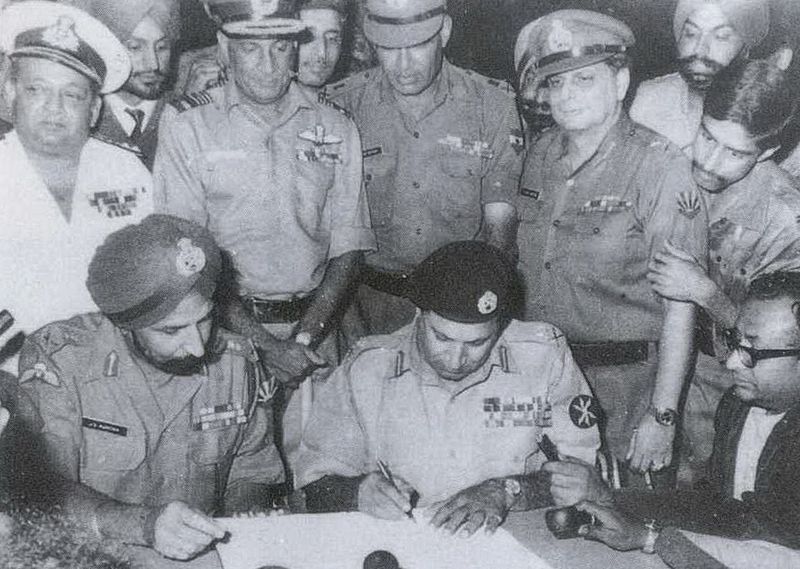
Lt. Gen. A. A. K. Niazi of Pakistan signing the Instrument of Surrender, thereby ending the Bangladesh Liberation War. 16 December 1971
16 December 1971 is marked as the day of Fall of Dhaka (Ahmed, 2004). It was the day when East Pakistan became Bangladesh. And it is quite unfortunate that the event left many questions which are still needed to be answered. But along with it, there are lots of false and fabricating perspectives and perceptions about this tragic event that need to be presented in front of the new generation who is not clear about what happened 48 years ago. Before further arguments, it is important to highlight that the typical narrative which we find almost everywhere in the literature about Fall of Dhaka was propagated and proliferated by sponsored elements in academia. Because of this one-sided picture, fabricated figures about millions of genocide and rape cannot be justified or proved up till today.
Every year on 16 December, India presents it as the day when years-long subjugation and atrocities of Pak Army ended. However, here is the other side of the picture. By seeing political turmoil in East Pakistan, India availed the opportunity to dismember its rival into two by igniting ethno-linguistic sentiments and training local militants. India pretends that it is the well-wisher and showed romantic and altruistic behaviour for Bengali welfare. But the reality is something else. If we critically review the series of events that happened before the 1971 war, we can find that the whole battle was staged in the way that India had served its nefarious designs. So one should not be reluctant to say that India acted mainly in its national interest, and it was not romantic and altruistic for the welfare of Bengalis (Haider, 2009).
It is crystal clear that India never supported Bangladesh to become strong and independent and created problems from the beginning. India kept hostile relations with Bangladesh due to disputes over Ganges River and construction of Farakka barrage near Bangladesh border. It is changing the Bengali perception about India, and Bangladesh now considers India as a threat due to socio-political, environmental and strategic issues (Barbhuiya, 2009). Likewise, the maritime belt conflict and border killings of Bangladesh nationals are yet to be resolved. It is on the record that India utilized Shariful Haque Dalim, the liberation war veteran, for its own interest and even at one time, he was regarded as the most favourite man of Indira Gandhi and Gen. Jagjit Singh Aurora. He was awarded the highest Bangladeshi awards for his services, but when India found no further benefit from him, he became the most wanted person.
.jpg) Major Dalim admitted in his book Bangladesh, Untold Facts that India used him against his own country (Dalim, 2005). According to him, India does not want Bangladesh to be strong and has malicious designs to make the latter dependent on India. Thus, an independent Bangladesh is not favourable for India, which would perceive a strong and stable Bangladesh as a threat for its national security. Dalim further adds that Bangladesh and Pakistan, by joining their hands, can easily sandwich India. He categorically explains that India is the mastermind of creating a continuous rift between Pakistan and Bangladesh. Sound and stable mutual relations between Pakistan and Bangladesh are not in favour of India, and that is why India propagates conflicting themes for deepening the rift and misunderstandings.
Major Dalim admitted in his book Bangladesh, Untold Facts that India used him against his own country (Dalim, 2005). According to him, India does not want Bangladesh to be strong and has malicious designs to make the latter dependent on India. Thus, an independent Bangladesh is not favourable for India, which would perceive a strong and stable Bangladesh as a threat for its national security. Dalim further adds that Bangladesh and Pakistan, by joining their hands, can easily sandwich India. He categorically explains that India is the mastermind of creating a continuous rift between Pakistan and Bangladesh. Sound and stable mutual relations between Pakistan and Bangladesh are not in favour of India, and that is why India propagates conflicting themes for deepening the rift and misunderstandings.
But there is the difference between these propagandas and facts. No doubt, political and military leadership of Pakistan misunderstood what was happening in East Pakistan over the period of time and committed lots of mistakes.
In addition to it, an international conspiracy was plotted against Pakistan. It is on the record that India opened its borders with East Pakistan, welcomed the members of Mukti Bahini in the cover of migrants, equipped them with the weapons and trained them with the tactics of guerilla warfare (Das & Kumar, 2019). It is the part of the record that there were 18 camps for Bengali migrants in bordering districts of India. Indian Army’s major general and three brigadiers were appointed on these camps for training purposes of Mukti Bahini. Here it is important to mention that the same tactic was applied by India against Sri Lanka in 1983-1986 by training Tamil Tigers (Nieto, 2008). But with effective intelligence sharing between Pakistan and Sri Lanka, the latter succeeded to overcome the issue.
India now claims to be an ally and major trade partner of Bangladesh, but if we study the facts, the trade deficit between India and Bangladesh is visible. India exports goods worth over $6.8 billion to Bangladesh; in return, India has imposed duties, (e.g. anti-dumping duty) on imports from Bangladesh. The bilateral trade deficit is widening due to the Indian policy of protectionism that has staggered Bangladesh exports to India (Gupta, 2007). India presents its role as a big brother for Bangladesh but its overwhelming presence in the region and aggressive policies in the service of its national interest are being perceived as a threat by Bangladesh.
On the other hand, Pakistan recognized Bangladesh in 1974, and since then it has been ready for further cooperation in various sectors. Both countries have a lot in common; both are founding members of the South Asian Association for Regional Cooperation (SAARC), part of the Developing 8 Countries, the Organisation of Islamic Cooperation (OIC) and the Commonwealth of Nations. In other words, there are many platforms where both states can cooperate and benefit from each other (Mahmood et al., 2015).
Along with all these things, it is essential to expose the reality of India, which has hegemonic designs in South Asia. Currently, India is threatening minorities and there is a situation of complete chaos after the passing of the controversial citizenship. Political space for minorities is rapidly shrinking (Chaudhary & Marlow, 2019) and, likewise, various freedom movements are at their peak in the country. The statements of the ex-Prime Minister Indira Gandhi on the fall of Dhaka still dominate: “We have taken the revenge of a thousand years… We have drowned the two-nation theory in the Bay of Bengal.” But the current actions of the Bharatiya Janata Party (BJP) government against Muslims and other minorities have confirmed that the two-nation theory is still alive.
References:
1. Ahmed, K. (2004). Fall of Dhaka: Ready to Face the Truth?. Friday Times, 15 (46).
2. Dalim, S. H. (2005). Bangladesh: Untold Facts. Nobojagoron Prokashoni.
3. Das, S., & Kumar, B. (2019). Indian Military Involvement in the 1971 Crisis of East Pakistan: A Justification of Level of Analysis. American Journal of Theoretical and Applied Business, 5(4), 84-89.
4. Gupta, S. (2007). India-Bangladesh bilateral trade and potential free trade agreement (The World Bank Bangladesh Development Series). The Journal of Indian Management & Strategy 8M, 12(2), 58-59.
5. Haider, Z. (2009). A revisit to the Indian role in the Bangladesh liberation war. Journal of Asian and African Studies, 44 (5), 537-551. doi: 10.1177/0021909609340062.
6. Levie, H. S. (1974). The Indo-Pakistani Agreement of August 28, 1973. American Journal of International Law. American Society of International Law. 68 (1): 95–97
7. Mahmood, A., Farooq, S., & Awan, N. (2015). Bangladesh-Pakistan relations: A hostage to history. American International Journal of Contemporary Research, 5, 66-77.
8. Nieto, W. A. S. (2008). A war of attrition: Sri Lanka and the Tamil Tigers. Small Wars & Insurgencies, 19(4), 573-587.
9. Vinayaraj, V. K. (2009). India as a Threat: Bangladeshi Perceptions. South Asian Survey 16.1 (2009): 101-118.
10. Chaudhary A., Marlow I. (2019). Why India’s Students Are Angry and Its Muslims Are Worried. Washington Post. Dec. 19, 2019.
About the author:
Sahibzada M. Saed is an IR analyst and freelance columnist based in Islamabad. He holds master degree in International Relations from National Defence University, Islamabad.
![]()
- TOPICS :
- History
- REGIONS :
- South Asia

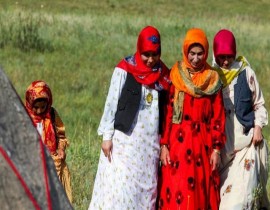
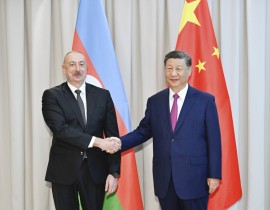
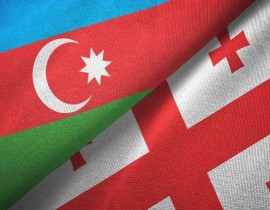
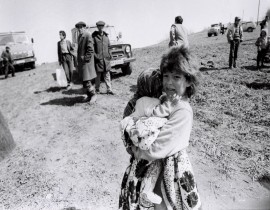
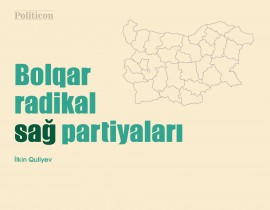
jpg-1599133320.jpg)
